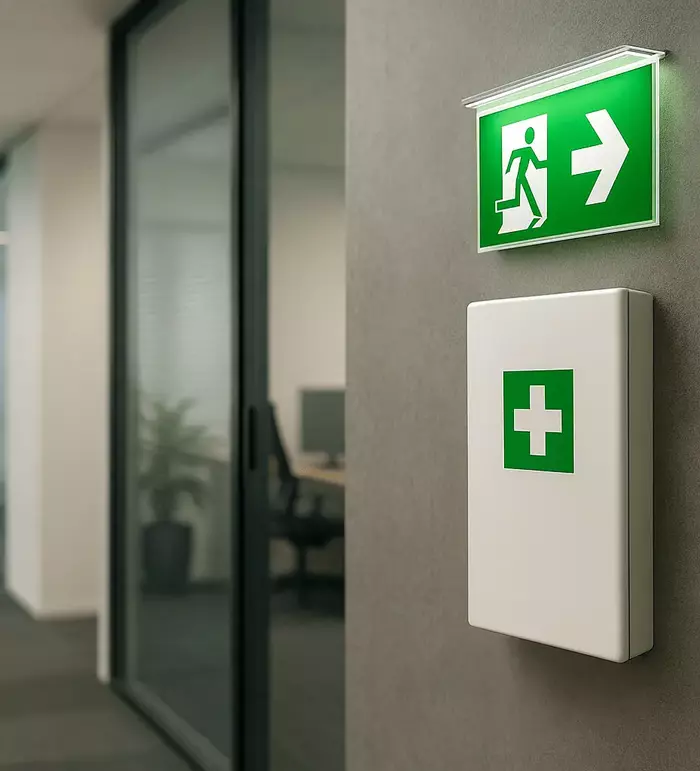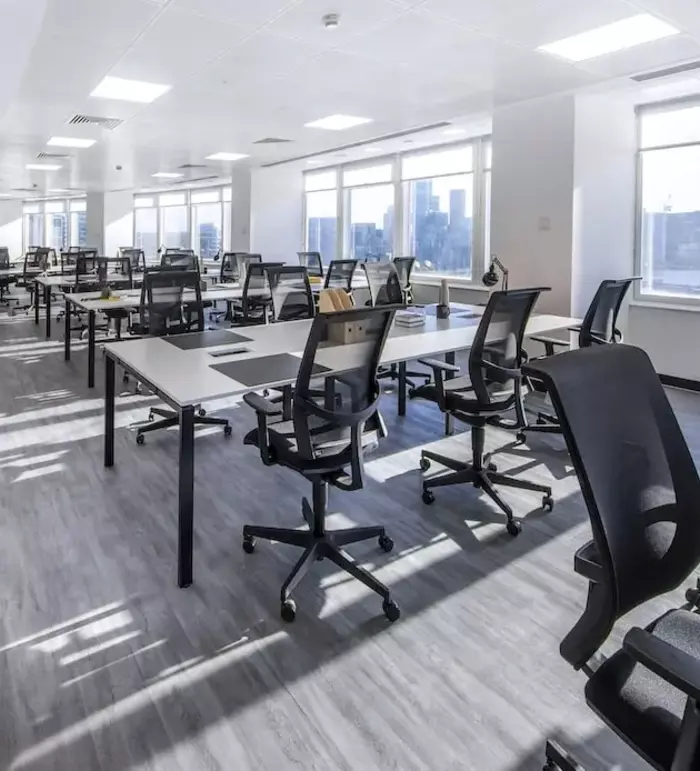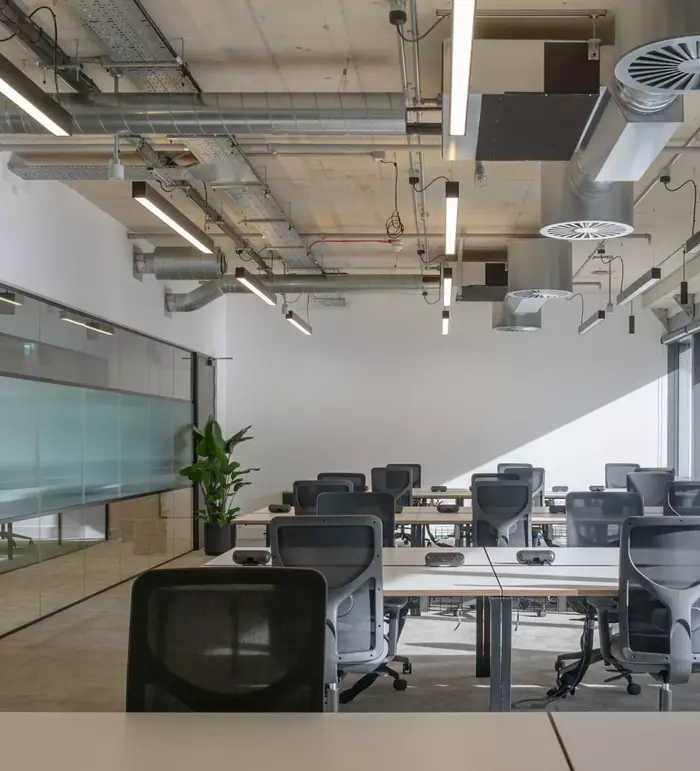Moving into a managed office should feel like a fresh start, not a leap into the unknown. The space is fitted, the furniture is in, and the internet is up and running. The risk, unfortunately, is that everyone assumes "someone else" has taken care of security. That is how gaps creep in and how audits, breaches and downtime happen.
This guide gives enterprise IT, ops and security teams a practical managed office IT security checklist. It balances what your provider typically covers with what still sits on your side. The aim is simple: get productive quickly, stay compliant, and avoid paying twice for controls you thought were included. If you are still exploring options, Flexioffices can help you compare managed office space and understand what is bundled before you sign.
Key takeaways
- Use this managed office IT security checklist from selection to go-live.
- Map shared responsibility clearly in the contract and handover.
- Start with Cyber Essentials controls, then layer to ISO 27001.
- Lock down Wi-Fi, identity, device build and backups on day one.
- Test incident response and measure monthly risk trends.
- Keep links to GDPR duties and HSE DSE checks visible for teams.
What "managed office" means for IT & security
A managed office gives you a private workspace, typically on a flexible lease, with a fit-out tailored to your brand. You get control of your own front door and the look and feel, while the provider sorts the build and many services. If you are deciding between models, Flexioffices' overview of serviced, managed and leased office models explains the trade-offs in setup time and control.
That model has security implications. You are not in a shared coworking suite, but you often inherit building networks, access control systems and visitor management tools. The contract and handover must make the boundary lines explicit. Teams that assume "the building Wi-Fi is fine" tend to regret it.
Shared responsibility with your provider
Security in a managed office is a shared responsibility. The provider typically handles the fabric of the space, physical access systems, base internet handoff and landlord-controlled areas. You own your identity and access management, device security, data governance and how your staff use technology. Get the split in writing and align it to your internal controls. If London is your target, comparing requirements against Flexioffices' London office space pages can help you shortlist buildings that already match your needs.
Typical inclusions vs gaps
Inclusions often cover CCTV for common areas, visitor sign-in, perimeter alarms, risers, patch panels, basic Wi-Fi and power resilience at the building level. Gaps usually appear around tenant Wi-Fi segmentation, device build standards, backup and restore, logging, and incident response. Close those gaps before move-in, not after the first outage.
Pre-move diligence, contracts and handover
Before you pick a building, you need evidence. Ask for network diagrams, resilience descriptions, and details on who manages what. Confirm segregation between tenants and how visitors are handled. Cross-check these with your own standards and the controls required for Cyber Essentials certification, which the NCSC recommends as a baseline for UK organisations.
If you are at the compare-and-choose stage, use Flexioffices' moving office checklist to keep the logistics on track, then add the security tasks below to your plan. Put the technical facts into your heads of terms, not a vague appendix that no one enforces after the lease is signed.
Due diligence questions for providers
Open with the basics, then push into evidence:
- Who operates the core internet link, and where is the tenant demarcation point located in the comms room?
- How is Wi-Fi segmented per tenant SSID and VLAN, and who owns the controller?
- What logging is captured for door controllers, lifts and visitor kiosks, and how long is it retained?
- What is the patching cadence for building-managed switches, APs and controllers, and who approves changes?
- How are plant rooms and risers protected, and who holds keys and access logs?
- What is the incident reporting SLA, including contact methods and escalation to your on-call team?
Where answers seem thin, ask for diagrams, inventories and maintenance records. If a building is not ready to share basics, keep looking.
Handover pack essentials
When you get the keys, you should also get a handover pack. At a minimum, it needs:
- As-built network and cabling drawings, with labelled patch panels and ports.
- An inventory of all building-managed network gear that touches your space.
- The public IP ranges at your demarcation, QoS policies and any content filtering controls in place.
- Contact details and SLAs for building IT, security and out-of-hours support.
- Access control programming procedures for joiners, movers and leavers.
Store the pack in your ITSM and change control system. Treat it as live documentation.
The managed office IT security checklist
This is your practical, sequence-ready checklist. Work through it from contract to day one and then into business as usual. If you need a refresher on the office types and what they include, Flexioffices' page on types of offices is a useful reference while you balance cost and control.
Foundations: identity, devices and updates
Start with identity. Enforce MFA for all staff and admins, set conditional access policies, and require device compliance for access to sensitive apps. Standardise your device build with full-disk encryption, EDR, host firewall and automatic patching. Align your baseline to the five Cyber Essentials control areas, which cover patching, access control, malware protection, secure configuration and firewalls, then consider certification to prove it. The scheme details are set out in the Cyber Essentials overview.
Passwords still exist, however annoying. Use the NCSC's approach of three random words for memorable, strong passphrases, backed by MFA and a password manager.
Network, internet & Wi-Fi
Insist on a clean tenant demarcation. Run your own firewalls and define separate VLANs for staff, guests, printers, IoT and building services. Use WPA3 where supported, rotate PSKs for any legacy guest networks, and prefer certificate-based Wi-Fi auth for corporate devices. Disable insecure management interfaces on switches and APs, and restrict admin from a bastion jump host only.
Define bandwidth and QoS for voice and video. Agree on a change window and change control with the provider for any building gear that impacts your traffic. Capture logs from edge firewalls, wireless controllers and RADIUS into your SIEM. If you are scaling in London across multiple sites, keep an eye on resilience when comparing City of London offices and similar hubs, because comms room design varies widely across buildings.
Data, backups & legal
Backups are your last line of defence. Use immutable snapshots for critical systems and test restores quarterly. Classify data so that only approved staff can access personal information. The ICO's guide to data security explains the UK GDPR security principle and the need for appropriate technical and organisational measures.
If your clients expect higher assurance, map your control set to ISO/IEC 27001. Even if you do not certify, the ISO/IEC 27001 overview is a reliable checklist for a formal information security management system.
Physical security & health
Do not neglect doors and desks. Test card access changes within one hour for leavers. Review camera coverage of your front door and comms room, with privacy considerations for staff areas. For staff wellbeing and compliance, use the HSE's DSE guidance to set up safe workstations, and apply the HSE's DSE workstation checklist during move-in.
Ongoing operations, testing and metrics
Security is a process, not a one-off project. Build a simple monthly rhythm: patch, review, test, improve. Align your patch cadence with vendor release cycles and your risk appetite. Record changes that touch building systems in the same register as your own, so you can correlate outages and incidents later.
Incident response needs rehearsal. Run a quarterly tabletop that includes the provider's building team. Simulate likely events: internet outage, door controller failure, rogue AP, phishing campaign and lost laptop. After each exercise, update playbooks, asset lists and contact trees. If you are piloting smart building tech, keep governance tight, using guidance such as the principles behind Cyber Essentials resources to stay focused on basic controls that cut real risk. The NCSC hosts practical Cyber Essentials resources for that purpose.
Internal drills and external certification
Internal drills build muscle memory. External certification builds credibility. For many UK firms, Cyber Essentials is a pragmatic starting point and may be a requirement in public sector supply chains. Some organisations then seek ISO/IEC 27001 for broader assurance. Whichever path you choose, maintain a single risk register and map each control to an owner and a review date.
What to measure monthly
- Patch compliance by device group.
- MFA coverage and risky sign-ins from your identity provider.
- Backup success rate and the latest tested restore.
- Phishing simulation failure rate and time to report.
- Mean time to remediate critical alerts.
Use these numbers to set quarterly goals. Reward improvement, not perfection.
Roles, ownership and training
Write a simple RACI for every control in this checklist. The point is clarity. Your provider owns building systems. You own tenant networks, identity, devices and data. Where overlap exists, such as Wi-Fi controllers or visitor systems that touch your data, spell out who configures, who monitors and who responds to incidents.
If you are still exploring options, speak to Flexioffices about managed office space across the UK. The right building team makes ownership simple, which saves everyone time during audits.
Split responsibilities with your landlord/provider
Document the joiner, mover, and leaver flow across door access, Wi-Fi and visitor kiosks. Agree on response times for critical incidents and out-of-hours coverage. Confirm who pays for replacement cards, broken readers and AP swaps. Make it dull and precise.
Human risk reduction
People are your control surface. Run short, frequent awareness modules, not yearly marathons. Keep the focus on phishing, strong passphrases and safe data sharing. Link training to real incidents and make it clear how to report issues. When you move or expand, brief staff on the new space, including entry routes and visitor rules. If you are scaling to new neighbourhoods, Flexioffices' local pages, such as Liverpool Street offices, can help you plan badge profiles and delivery procedures per site.
Budgeting smart in a managed office
Avoid buying the same thing twice. If the building provides a firewall, decide whether to place yours in front and request a pure handoff, or to pay for a dark fibre handover direct to your edge. Compare the cost of the provider's managed Wi-Fi against running your own, including licences and controller hosting. When assessing options, Flexioffices' practical articles, like the guide to flexible office space, can help you pressure-test what you really need and what you can drop.
Conclusion
Managed offices get you productive fast. The trick is to couple that speed with a clear security baseline, shared responsibilities and regular testing. Use this managed office IT security checklist to drive your move, keep evidence straight for auditors and give your team the confidence to get on with work. If you want a space that already aligns with your standards, talk to Flexioffices early in the search.
FAQs
Do I really need Cyber Essentials if we already use MFA and EDR?
Yes. MFA and EDR are great, but Cyber Essentials consolidates five essential controls into a coherent baseline and demonstrates due diligence to customers. The NCSC describes the scheme in its Cyber Essentials overview.
What is the difference between a managed office and a serviced office for security?
A managed office is your own private space with a custom fit-out, so you get more control of networks and access policies. In a serviced office, many services are shared, so you often accept the provider's baseline. See Flexioffices’ explanation of serviced vs managed offices for a deeper comparison.
How do GDPR duties apply in a managed office?
The UK GDPR requires the implementation of appropriate security measures and a risk-based approach to the processing of personal data. That applies regardless of office model. The ICO's guide to data security explains the expectations and outcomes to aim for.
We are not ready for ISO/IEC 27001. Is it still useful?
Yes. The standard outlines the procedures for implementing an information security management system. You can align to the structure now and certify later. See ISO's ISO/IEC 27001 overview for scope and requirements.
What health & safety checks belong in the IT plan?
Run DSE assessments for staff to avoid injuries and meet UK regulations. The HSE's DSE guidance and the workstation checklist are the quickest way to get this right during move-in.
















